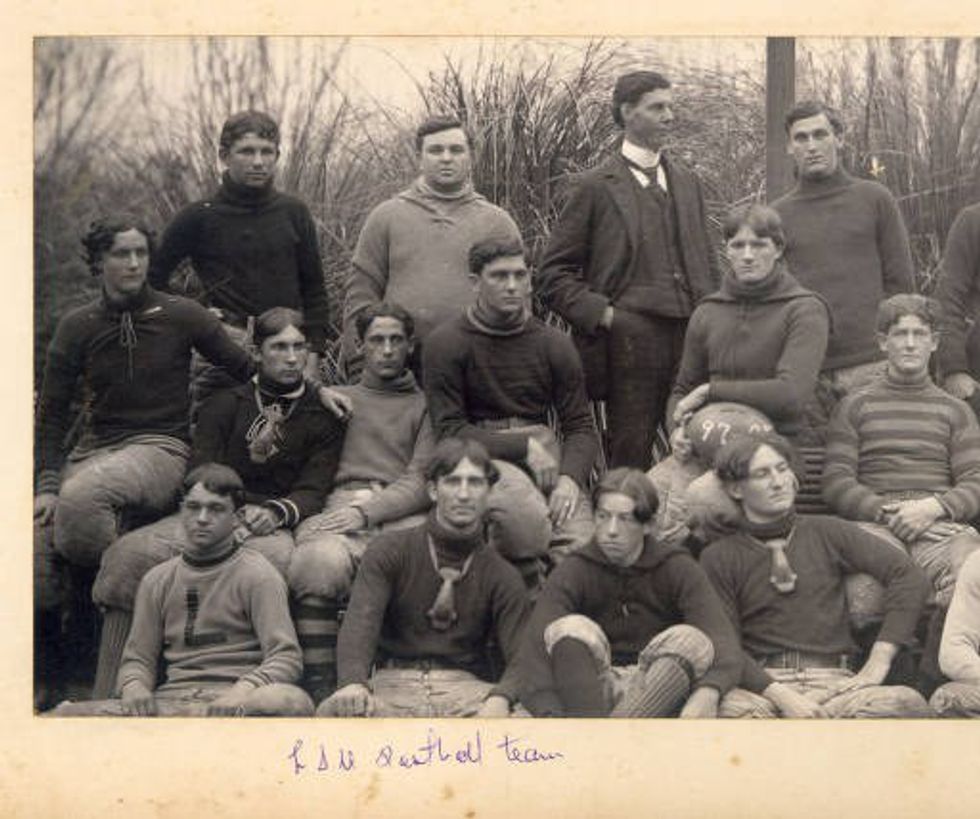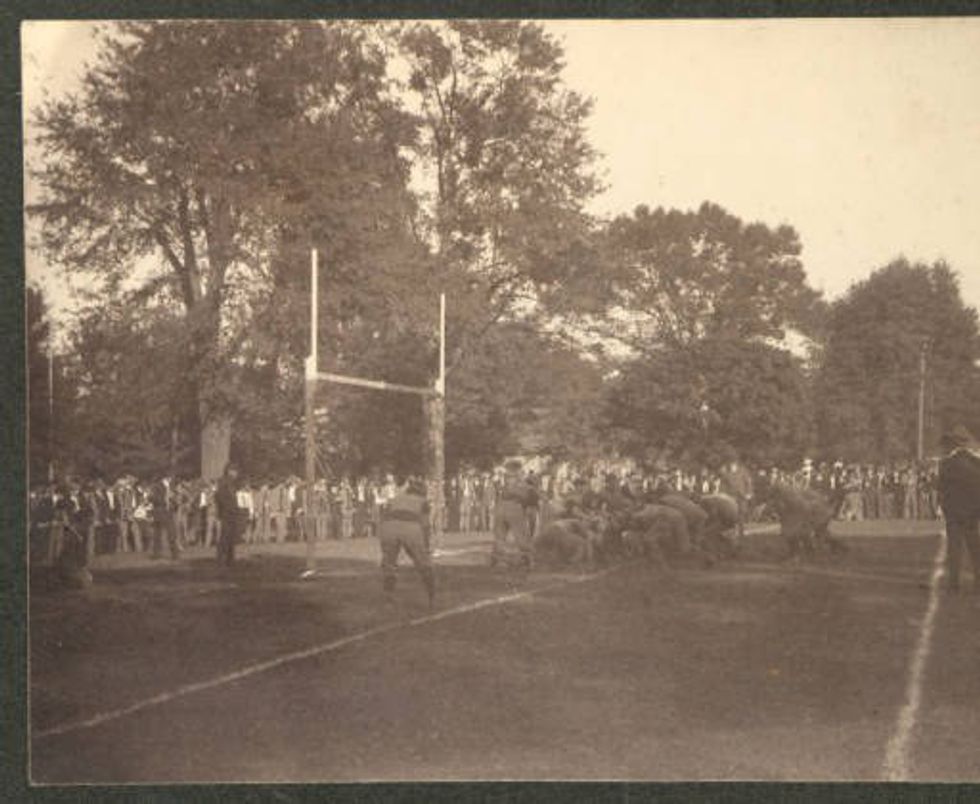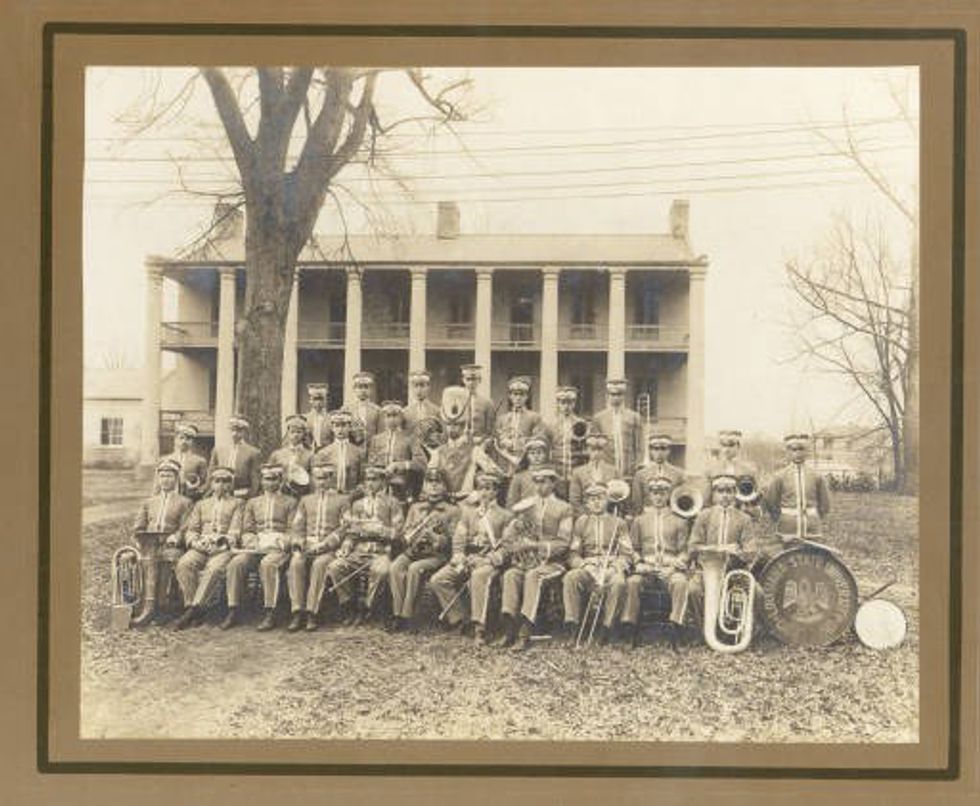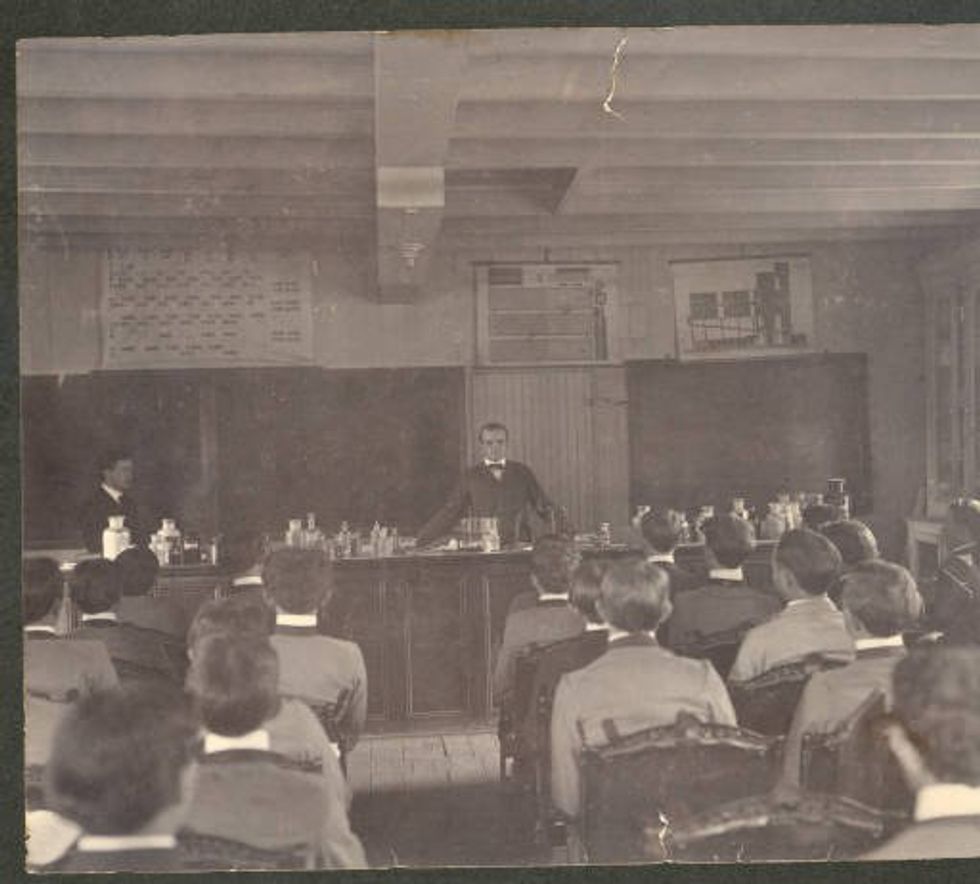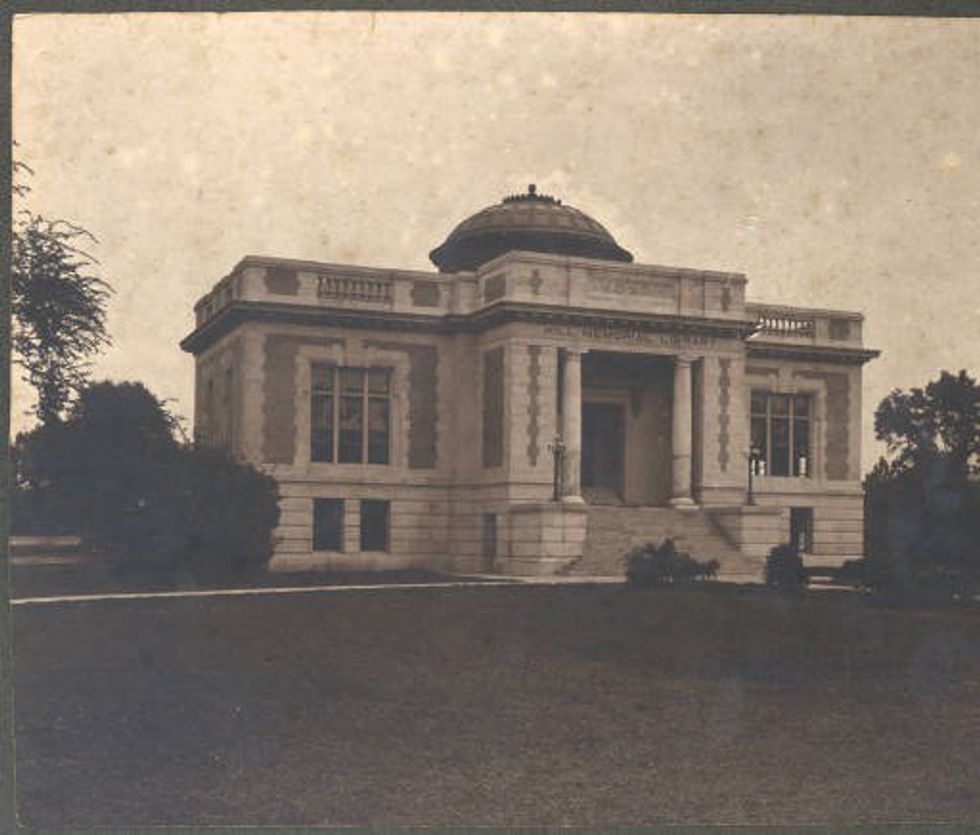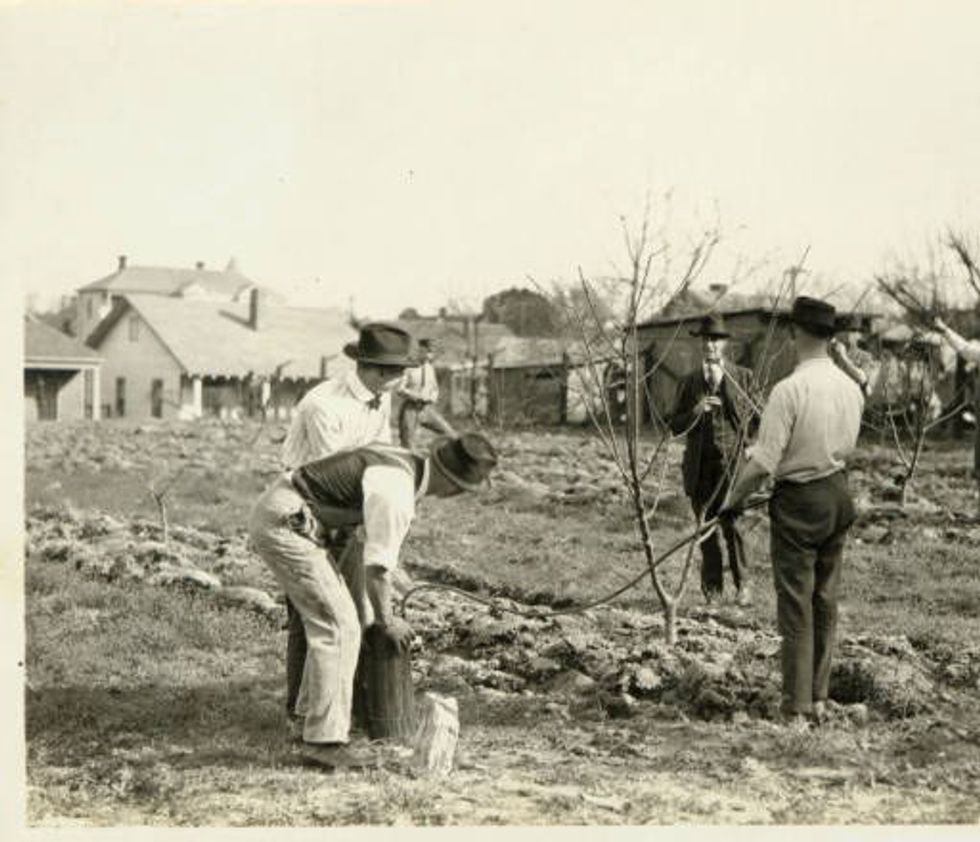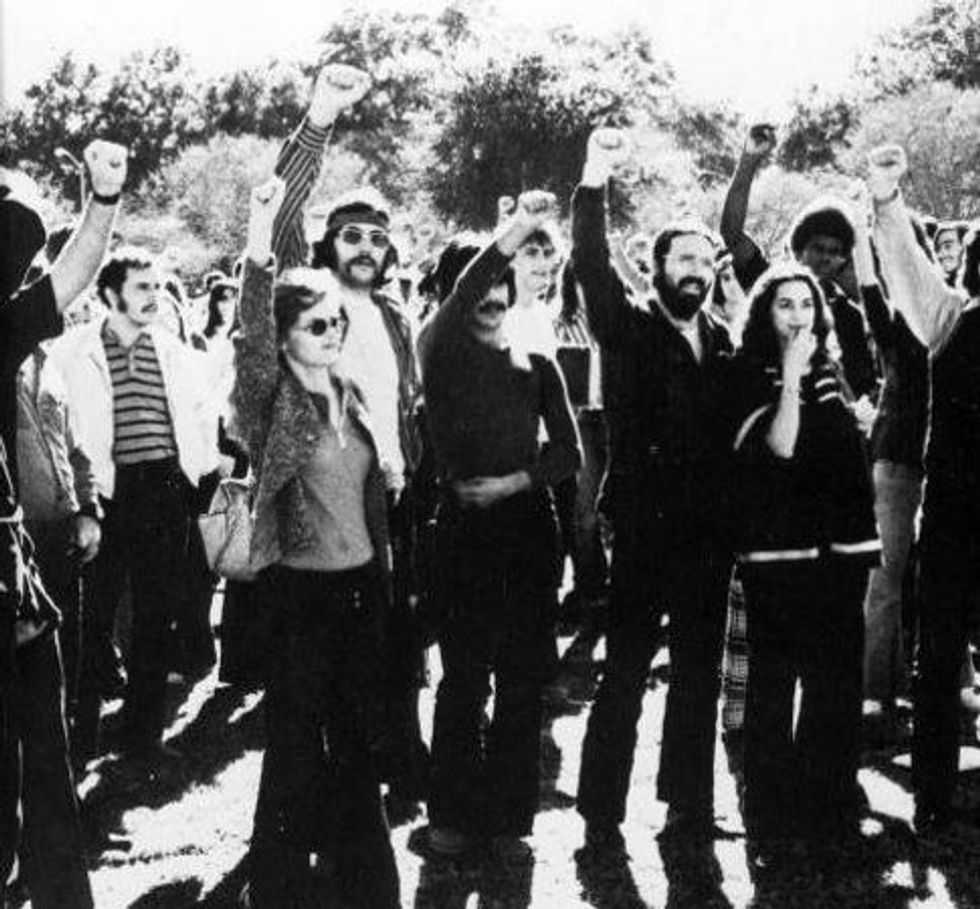We all know that we go to a great school. Most of us have known since we were small that LSU is the best. But great things start small, and LSU is no exception. I was lucky enough to come across some old photos that exemplify key pieces of the incredible journey of this home for the Tigers.
It all started in 1853 as the Louisiana State Seminary of Learning and Military Academy located in Pineville, Louisiana. From its original purpose, LSU gets its nickname, the "Old War Skule," that comes from the proud military traditions still evident today.
The Louisiana State Seminary of Learning and Military Academy was closed in 1861 due to the Civil War, reopened in 1863, and closed again due to invasions by the Union Army. Finally in 1865, the school opened once again, only to be burned down four years later. Yeah, it make the currents budget cuts seem petty, right?
In 1869, the school was moved to a campus in downtown Baton Rouge, where the State Capitol is today, and in 1870 the name officially became Louisiana State University.
Here is the graduating class of Louisiana State University of 1871. There were 22 students, all of which were white males. Last spring, LSU had its largest graduating class ever of 3,979 including men and women of every color and of foreign nations. How far we have come!
While the current campus of LSU was being built, plenty was happening on the downtown campus including the birth of LSU Athletics.
Here is the baseball team of 1908. The first LSU baseball team, however, was founded in 1893.
Here is the LSU Basketball Team of 1909, playing on State Field. State Field was known as the "athletic field" on the LSU downtown campus where both the football and baseball teams also played their games.
And here you are, the fierce Tigers themselves. Here is one of LSU's first football teams, in 1897. This was taken only four years after Dr. H.A. Morgan and Dr. Charles Coates (Yes, as in Coates Hall) started a football team. In Dr. Coate's opinion, the school was dull and needed some athletic competition to be brought in. He had cleats nailed onto leather shoes, and for a uniform, he went to a local costume store for ribbons to make rosettes and badges. There were only two colors left, and can you guess what they were? Yes! This is how we became the school of purple and gold. Coates is also the one who coined our mascot, calling his team, "The Louisiana Tigers". Describing that first season, he said, "Our team didn't compare with present-day teams, in skill, in ability, or power. But we had a pretty good time and if there was any professionalism involved I never heard of it."
The LSU vs. Auburn game of 1902 on State Field
Around the same time as the creation of the football team, though at the time completely separated from it, came the creation of the Tiger Band. In 1893, Wylie Barrow and Ruffin G. Pleasant (Oh not-so-Pleasant Hall) organized the band of 13 members. Over the years it grew more professional and ever more military-based. It wasn't until 1924 that the Tiger Band made its first appearance at halftime in Death Valley.
Of course during this time it wasn't all about sports and music. Students were also attending classes like (and sometimes unlike) we do.
Professor Coates teaching Chemistry Class.
Agricultural Students Farming Potatoes.
While the school was growing and thriving downtown, the new campus was steadily coming along, and many of the buildings we walk by and use every day were popping up including the Hill Memorial Library, built in 1903.
In 1930 landscaper Steve Burden began the project of planting oak trees on the new campus.
Finally in 1936, the student body was moved to the new campus where LSU resides today.
Around the same time was the birth of the one and only Death Valley. It was built originally to hold 12,000 people. Today it has been expanded to hold over 102,3231 screaming Tiger Fans. This photo was taken in 1936 for the LSU vs. Tulane game.
That same year brought another monumental event for LSU. In 1936 $750 was raised by collecting 25 cents from each student at the university to purchase LSU's very first Mike the Tiger from the Little Rock Zoo. His original name was Sheik, but it was changed to Mike in honor of Mike Chambers who was instrumental in bringing him to LSU. Mike I reigned on LSU's campus for almost 20 years.
In the 1960s amid civil rights activism and protests of the Vietnam, Free Speech Alley was introduced to LSU as a place where students can exercise their rights of the First Amendment.
Finally, the 60s also gave us yet another beloved tradition. Previously known as the LSU Ballet Corps, in 1965 they debuted as the LSU Golden Girls.
It's been a long journey for Louisiana State University, and so much has changed. Today we enjoy the privilege of going to a school with one of the most beautiful campuses in the country, longstanding traditions, and a place of great pride and endless memories for all of its students. Much has changed, but every step along the way has brought us to where we are today. So, as they say, "May thy spirit live in us, forever LSU!"






